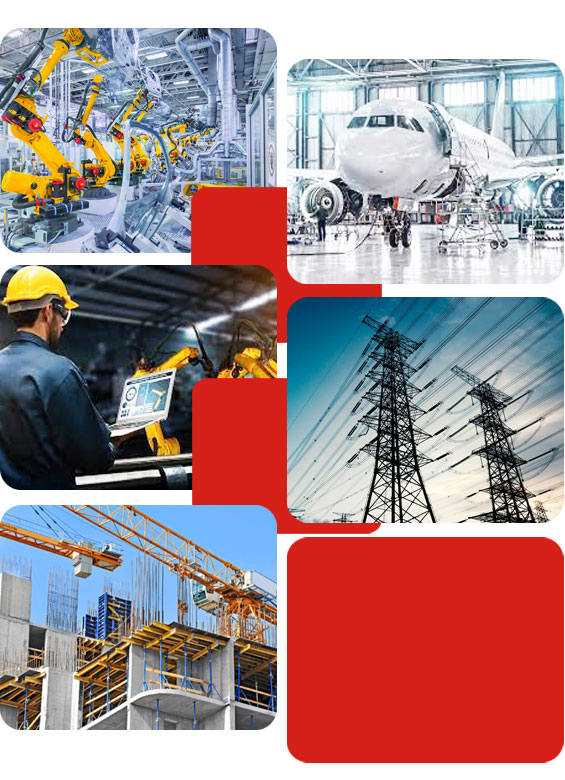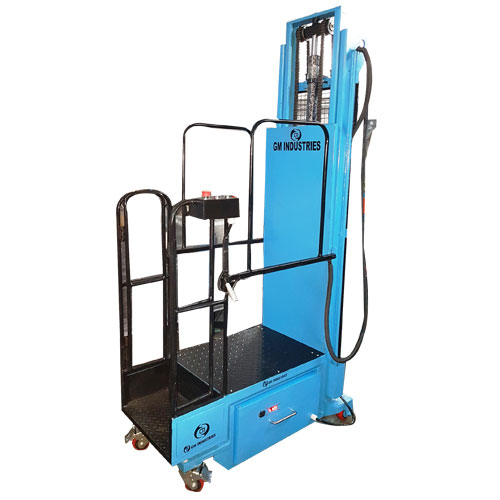Lift Stacker
Introduction to Lift Stacker
A Lift Stacker is a material handling machine that is used to lift and move materials from one place to another. It is designed to be simple to use, even for inexperienced operators, and is ideal for light use in narrow warehouse environments and occasional stacking and order picking tasks.
Hydraulic stackers feature a fold-away hydraulic foot pump to assist in lifting loads and a hand-operated valve for lowering. A fork-over-base model is recommended for stacking and unloading open pallets and crates in tight spaces and confined areas. Fixed base legs can be ideal for straddling loads, pallets, or objects.
GM Industries offers a range of Lift Stackers that are designed to handle a variety of applications, such as lifting. These stackers can be operated with an easy push or pull by hand. They are highly efficient and durable, utilizing a 12V basic battery charger and battery level gauge.
Some of the key features of GM Industries’ Lift Stacker include a small turning radius, making it easier to make sharp turns, a controllable direction handle, a dual pump for easier lifting, top-quality hydraulic pump and cylinder, a protection device for the steering wheel, and a safety guard for the load roller. The top-of-stroke bypass valve is also built-in.
GM Industries is a reputable company that offers high-quality material handling equipment, including Lift Stackers. Their Lift Stackers are designed to improve the efficiency of material handling tasks while also ensuring safety in the workplace.
Features of Lift Stacker
Lift Stackers typically come with a variety of features that make them efficient and easy to use in material handling tasks. Some common features of Lift Stackers include:
- Capacity: Lift Stackers come with different load capacities ranging from a few hundred pounds to several thousand pounds.
- Lift Height: Lift height refers to the maximum height that a Lift Stacker can lift a load. This can vary depending on the model, but typically ranges from a few feet to over 20 feet.
- Power Source: Lift Stackers can be powered by electricity, gasoline, diesel, or other fuel sources. Electric models are more common due to their low noise levels and lack of emissions.
- Controls: Lift Stackers typically feature intuitive controls that allow operators to lift and lower loads, as well as move the machine in different directions.
- Safety Features: Lift Stackers come with various safety features, such as load guards, emergency stop buttons, and tilt sensors, to ensure that the operator and the load are safe during operation.
- Manoeuvrability: Many Lift Stackers come with features that make them easy to manoeuvre in tight spaces, such as small turning radius, controllable direction handle, and compact design.
- Durability: Lift Stackers are designed to be durable and withstand heavy use in industrial environments. They are often made of high-quality materials such as steel or aluminium.
Overall, the features of a Lift Stacker will depend on the model and manufacturer. However, these features are intended to make the material handling process more efficient, safe, and convenient.
For more information on any of our high quality products or getting accurate prices contact GM Industries at
Call Us
+(91)-9820533489 / 7738562224
Enquiry Form
Submit
Advantages of Lift Stacker
Lift Stackers offer a variety of advantages that make them a popular choice for material handling tasks. Here are some of the key advantages of Lift Stackers:
- Improved Efficiency: Lift Stackers can help improve the efficiency of material handling tasks by allowing operators to lift and move loads quickly and easily. This can help reduce the time and effort required to move heavy items, increasing productivity.
- Versatility: Lift Stackers can be used in a variety of applications, including warehouses, distribution centers, manufacturing facilities, and retail stores. They can handle a range of load sizes and weights, making them a versatile material handling solution.
- Space Saving: Lift Stackers have a compact design that allows them to be used in narrow aisles and tight spaces. This can help maximize storage space and improve workflow in crowded environments.
- Improved Safety: Lift Stackers come with various safety features, such as load guards, emergency stop buttons, and tilt sensors, to ensure that the operator and the load are safe during operation. This can help reduce the risk of accidents and injuries in the workplace.
- Cost Effective: Lift Stackers are a cost-effective material handling solution when compared to larger, more expensive equipment like forklifts. They are also easier to maintain and repair, which can help reduce maintenance costs over time.
- Easy to Operate: Lift Stackers are designed to be easy to operate, even for inexperienced operators. They typically come with intuitive controls and require minimal training to use effectively.
Overall, Lift Stackers offer a range of advantages that make them an ideal choice for many material handling tasks. They are versatile, space-saving, and cost-effective, while also improving safety and efficiency in the workplace.
Applications of Lift Stacker
Lift Stackers are commonly used in a variety of applications across a range of industries. Some of the most common applications of Lift Stackers include:
- Warehousing: Lift Stackers are commonly used in warehouses to move and stack pallets of goods. They can be used to unload and load delivery trucks, move pallets to and from storage areas, and transport goods around the warehouse.
- Manufacturing: Lift Stackers can be used in manufacturing facilities to move raw materials and finished products. They can also be used to lift and position equipment and machinery.
- Retail: Lift Stackers are commonly used in retail stores to move and organize merchandise. They can be used to stock shelves, move goods from the stockroom to the sales floor, and transport goods within the store.
- Distribution Centers: Lift Stackers are frequently used in distribution centers to load and unload goods from delivery trucks. They can also be used to move goods to and from storage areas within the facility.
- Construction: Lift Stackers can be used on construction sites to lift and position heavy building materials, such as bricks, blocks, and cement bags.
- Agriculture: Lift Stackers can be used in agriculture to move and stack bales of hay, bags of feed, and other heavy materials.
Overall, Lift Stackers are a versatile material handling solution that can be used in a wide range of industries and applications. They are designed to improve efficiency, safety, and productivity in the workplace, making them a popular choice for many businesses.

